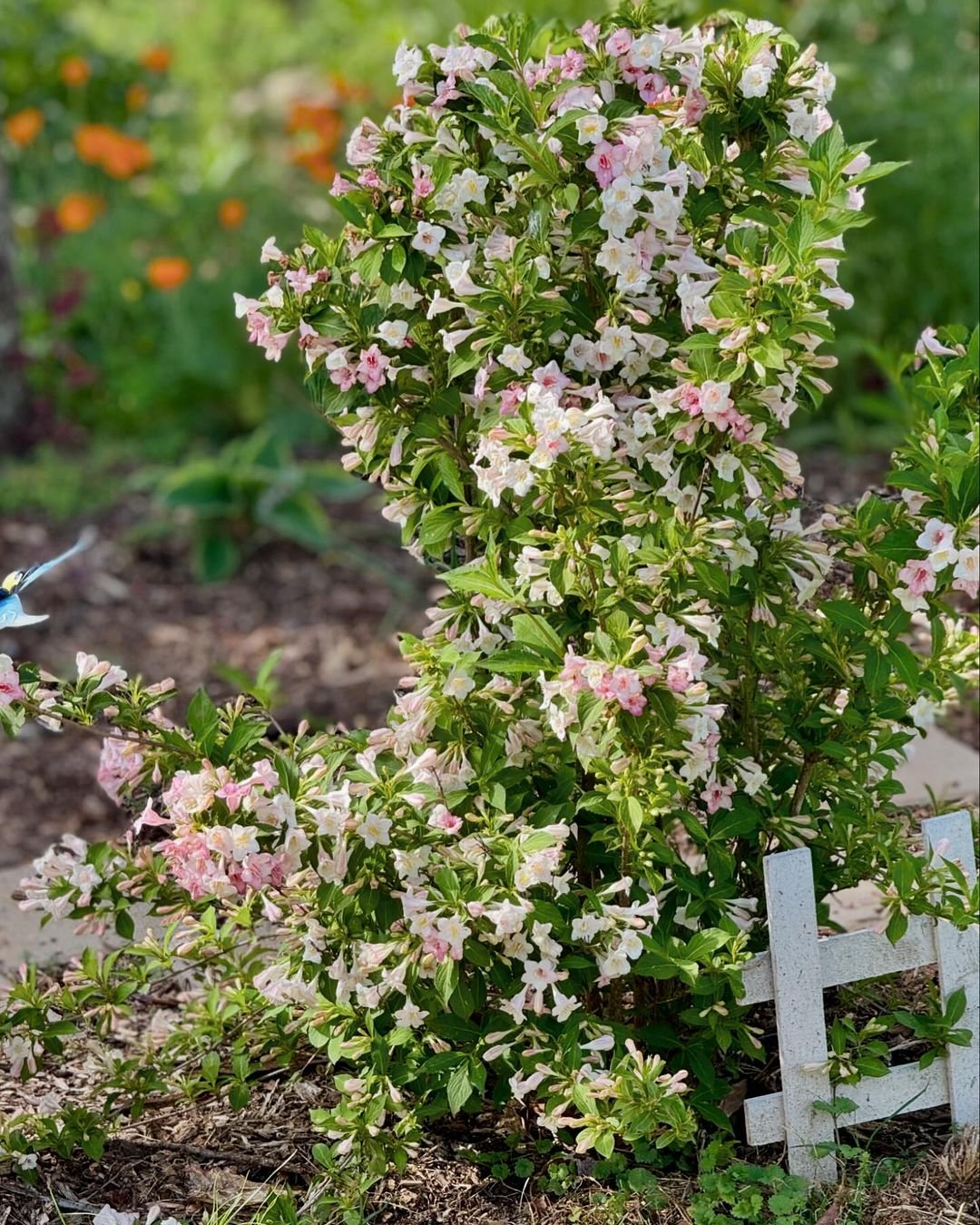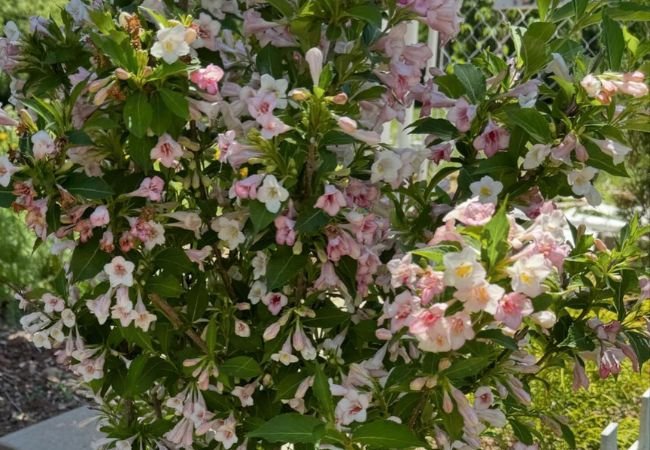Discover expert tips for cultivating a thriving and beautiful landscape with Rose Creek Abelia. Learn essential care techniques to enhance your garden with this stunning shrub.
Are you looking to add a touch of elegance and year-round interest to your garden? Look no further than the Rose Creek Abelia. This stunning shrub, with its glossy leaves and delicate flowers, can transform any landscape into a thriving, beautiful oasis. In this comprehensive guide, we’ll explore everything you need to know about growing and caring for Rose Creek Abelia, from planting to pruning and beyond. Get ready to elevate your garden game with this versatile and captivating plant!
Here’s a chart with information about the Rose Creek Abelia (Abelia × grandiflora ‘Rose Creek’):
| Category | Information |
|---|---|
| Botanical Name | Abelia × grandiflora ‘Rose Creek’ |
| Common Name | Rose Creek Abelia |
| Plant Type | Evergreen to semi-evergreen shrub |
| Hardiness Zone | USDA Zones 6-9 |
| Sun Exposure | Full sun to partial shade |
| Soil Type | Well-draining, fertile soil |
| Watering | Moderate; prefers consistently moist soil |
| Growth Habit | Compact, mounding |
| Height/Spread | 2-3 feet tall, 3-4 feet wide |
| Special Features | Glossy, dark green foliage with a reddish tinge, fragrant white to pinkish flowers, long blooming period from spring to fall, attracts pollinators, low maintenance |
What is Rose Creek Abelia?

Before we dive into care tips, let’s get to know this charming shrub a little better. Rose Creek Abelia (Abelia x grandiflora ‘Rose Creek’) is a compact, evergreen to semi-evergreen shrub that belongs to the honeysuckle family. It’s a hybrid cultivar known for its dense growth habit, glossy dark green leaves and clusters of small, fragrant white flowers that bloom from summer to fall.
This delightful shrub gets its name from its origin – it was discovered as a chance seedling at the Center for Applied Nursery Research in Dearing, Georgia, near Rose Creek. Since its introduction, it has become a favorite among gardeners for its low maintenance requirements and year-round appeal.
Key Features of Rose Creek Abelia:
- Compact size: Typically grows 2-3 feet tall and 3-4 feet wide
- Evergreen to semi-evergreen: Retains leaves in mild climates
- Glossy foliage: Dark green leaves with reddish stems
- Abundant blooms: White, bell-shaped flowers from summer to fall
- Fragrant: Flowers emit a sweet, subtle scent
- Attracts pollinators: Bees and butterflies love the nectar-rich blooms
Now that we’re acquainted with this beautiful shrub, let’s explore how to make it thrive in your landscape.
Planting Rose Creek Abelia
Proper planting is crucial for the long-term health and success of your Rose Creek Abelia. Follow these steps to give your shrub the best start:
- Choose the right location: Rose Creek Abelia prefers full sun to partial shade. In hotter climates, some afternoon shade can be beneficial.
- Prepare the soil: This shrub adapts to various soil types but thrives in well-draining, slightly acidic soil. Aim for a pH between 5.5 and 6.5. If needed, amend your soil with organic matter to improve drainage and fertility.
- Dig the hole: Make it twice as wide as the root ball and just as deep. This encourages roots to spread outward.
- Plant at the right depth: The top of the root ball should be level with or slightly above the soil surface.
- Backfill and water: Gently fill in around the roots with soil, tamping down to remove air pockets. Water thoroughly after planting.
- Mulch: Apply a 2-3 inch layer of organic mulch around the base, keeping it away from the stem to prevent rot.
Caring for Your Rose Creek Abelia
Once your Rose Creek Abelia is in the ground, it’s time to nurture it to its full potential. Here are essential care tips to ensure your shrub thrives:
Watering
Rose Creek Abelia is relatively drought-tolerant once established, but consistent moisture is key to lush growth and abundant blooms. Follow these watering guidelines:
- Water deeply and regularly during the first growing season to establish a strong root system.
- Once established, provide about 1 inch of water per week, either from rainfall or irrigation.
- Use a soaker hose or drip irrigation for efficient watering.
- Avoid overhead watering to prevent fungal diseases.
Fertilizing
While Rose Creek Abelia isn’t a heavy feeder, periodic fertilization can promote healthy growth and abundant blooms:
- Apply a balanced, slow-release fertilizer in early spring before new growth emerges.
- Use a fertilizer with an NPK ratio of 10-10-10 or similar.
- Avoid over-fertilizing, as this can lead to excessive growth and reduced flowering.
Pruning
Pruning is essential for maintaining the shape and health of your Rose Creek Abelia:
- Prune in late winter or early spring before new growth begins.
- Remove any dead, damaged, or crossing branches.
- Thin out dense areas to improve air circulation.
- If needed, you can trim back up to one-third of the shrub’s height to control size.
- Deadhead spent blooms throughout the growing season to encourage more flowers.
Pest and Disease Management
Rose Creek Abelia is generally resistant to pests and diseases, but it’s always good to be vigilant:
- Watch for common pests like aphids or spider mites.
- If pests appear, try hosing them off with a strong stream of water or using insecticidal soap.
- Prevent fungal diseases by ensuring good air circulation and avoiding overhead watering.
Landscaping with Rose Creek Abelia
Now that you know how to care for your Rose Creek Abelia, let’s explore some creative ways to incorporate it into your landscape:
- Foundation planting: Its compact size makes it perfect for planting near your home’s foundation.
- Low hedges: Create a beautiful, low-maintenance hedge by planting Rose Creek Abelias in a row.
- Mixed borders: Combine with other shrubs and perennials for a diverse and colorful garden bed.
- Container gardening: Grow in large containers for patios or balconies.
- Accent plant: Use as a focal point in small gardens or to highlight specific areas.
- Pollinator garden: Plant alongside other nectar-rich flowers to attract bees and butterflies.
- Woodland garden: Incorporate into partially shaded areas for a natural, understory look.
Companion Plants for Rose Creek Abelia
To create a harmonious and visually appealing landscape, consider pairing your Rose Creek Abelia with these complementary plants:
- Black-Eyed Susan (Rudbeckia hirta): These vibrant yellow flowers contrast beautifully with the dark green foliage of Rose Creek Abelia.
- Purple Coneflower (Echinacea purpurea): Another native perennial that attracts pollinators and adds a pop of color.
- Dwarf Fountain Grass (Pennisetum alopecuroides ‘Hameln’): This ornamental grass provides texture and movement.
- Autumn Fern (Dryopteris erythrosora): Add a touch of shade-loving greenery to complement your Abelia.
- Coral Bells (Heuchera spp.): These colorful foliage plants come in various shades to accent your Rose Creek Abelia.
Seasonal Interest of Rose Creek Abelia
One of the many charms of Rose Creek Abelia is its year-round appeal. Here’s what you can expect throughout the seasons:
- Spring: Fresh new growth emerges, with leaves taking on a bronze tint before maturing to dark green.
- Summer: Abundant white flowers begin to bloom, attracting pollinators to your garden.
- Fall: Flowering continues into autumn, with foliage potentially taking on subtle purple hues in cooler climates.
- Winter: In mild climates, the shrub remains evergreen, providing structure and interest to the winter landscape.
Troubleshooting Common Issues
Even with the best care, you might encounter some challenges with your Rose Creek Abelia. Here are some common issues and how to address them:
- Yellowing leaves: This could indicate overwatering or poor drainage. Ensure your soil drains well and adjust watering accordingly.
- Sparse flowering: Insufficient sunlight or over-fertilization might be the culprit. Move to a sunnier location if possible and reduce fertilizer use.
- Leggy growth: This often results from insufficient light. Prune back leggy stems and consider relocating the plant to a sunnier spot.
- Winter damage: In colder climates, protect your Rose Creek Abelia with a layer of mulch and consider using burlap wraps for extreme cold.
Propagating Rose Creek Abelia
If you’ve fallen in love with your Rose Creek Abelia and want more, good news – it’s relatively easy to propagate! Here’s how:
- Softwood cuttings: In late spring or early summer, take 4-6 inch cuttings from new growth.
- Remove lower leaves and dip the cut end in rooting hormone.
- Plant in a well-draining potting mix and keep moist.
- Place in a warm, bright location out of direct sunlight.
- Roots should develop in 4-6 weeks.
Rose Creek Abelia is a versatile, low-maintenance shrub that can add beauty and interest to any landscape. With its glossy foliage, delicate flowers and compact growth habit, it’s an excellent choice for gardeners of all skill levels. By following these care tips and creative landscaping ideas, you’ll be well on your way to creating a thriving, beautiful garden that you can enjoy year-round.
Remember, the key to success with Rose Creek Abelia lies in providing the right growing conditions, consistent care, and a little bit of creativity in your landscape design. So go ahead, give this charming shrub a try and watch as it transforms your outdoor space into a lush, inviting oasis that you, your family and local pollinators will love!








Leave a Reply